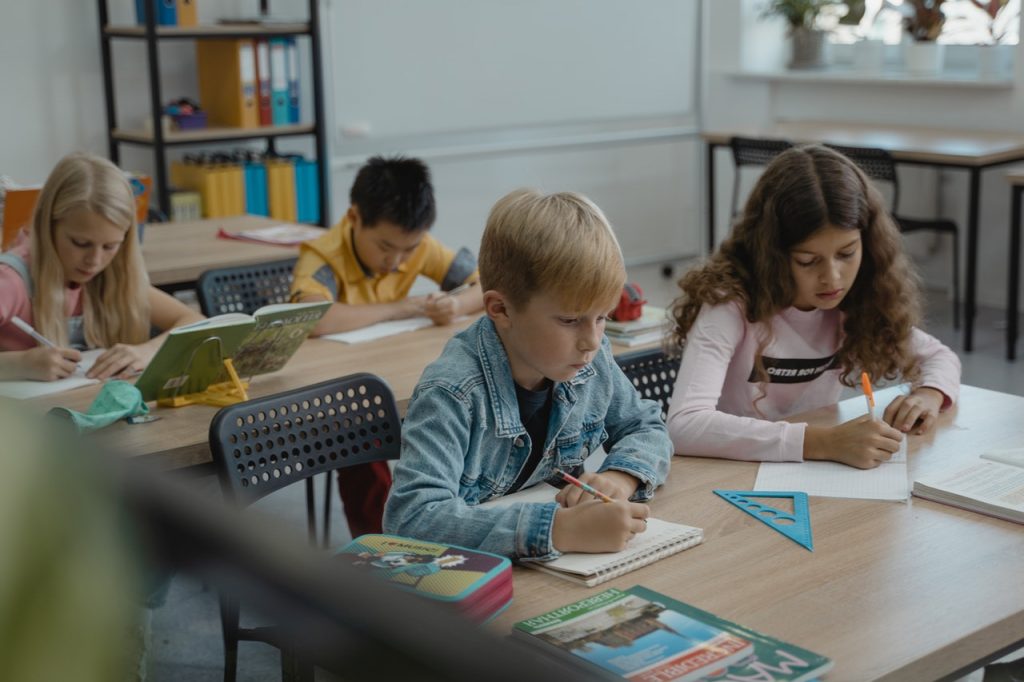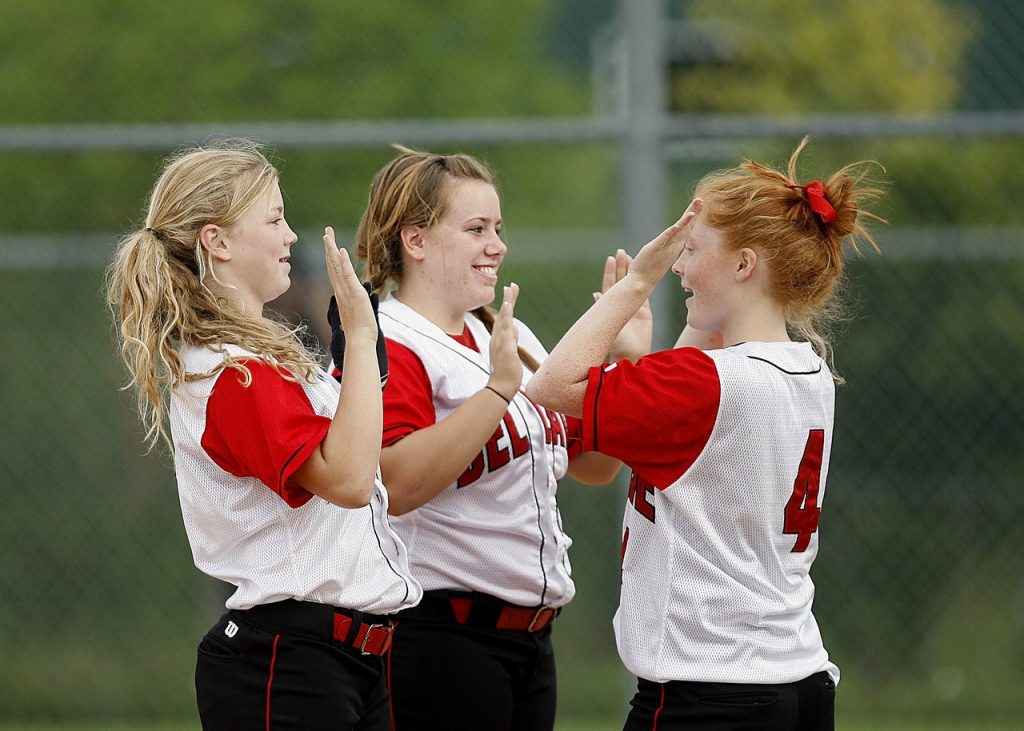Cognitive Theories
Psychology Notes Headquarters; Laura Overstreet; Lumen Learning; and Diana Lang
- Describe Piaget’s theory of cognitive development
- Describe information processing approaches to cognitive development
The Jean Piaget Stages of Cognitive Development
In the 1960s and 1970s, as Freudian and Jungian psychology were rapidly being replaced by more empirical methods of studying human behavior, a Swiss philosopher and psychologist named Jean Piaget (1896-1980) offered a new theory of cognitive development.[1]
The Jean Piaget theory of cognitive development suggests that regardless of culture, the cognitive development of children follows a predetermined order of stages, which are widely known as the Jean Piaget stages of cognitive development.
According to this Jean Piaget theory, children are not capable of performing certain tasks or understanding certain concepts until they reach a particular Piaget stage.
In addition, Piaget believed that children move from one stage to the next after extensive exposure to relevant stimuli and experiences. With these experiences, both physical and cognitive, they are ready to master new skills, which are essential for children to move through the Piaget stages.
The Four Jean Piaget Stages of Development
| Stage | Age range | What happens at this stage? |
|---|---|---|
| Sensorimotor | 0-2 years old | Coordination of sense with motor responses, sensory curiosity about the world. Language used for demands and cataloguing. Object permanence is developed. |
| Preoperational | 2-7 years old | Symbolic thinking, use of proper syntax and grammar to express concepts. Imagination and intuition are strong, but complex thoughts are still difficult. Conservation is developed. |
| Concrete operational | 7-11 years old | Concepts attached to concrete situations. Time, space, and quantity are understood and can be applied, but not as independent concepts. |
| Formal operational | 11 years and older | Theoretical, hypothetical, and counterfactual thinking. Abstract logic and reasoning. Strategy and planning become possible. Concepts learned in one context can be applied to another. |
Sensorimotor Stage

Age Range: Birth to 2 years old
According to the Piaget theory, children like to explore at the sensorimotor stage. They want to watch, hear, taste, touch things around them. They learn about their environment by sensation: watching, grasping, sucking and manipulating objects they can get their eyes and hands on. They generally don’t appear to be thinking about what they do.
As infants become toddlers, children enjoy their rapidly improving abilities to move around and take in new experiences. They focus on making sense of the world by linking their experiences to their actions.
Piaget further divided the sensorimotor stage into six substages, each sighted with at the establishment of a new skill.
- Reflexes (0 – 1 month): Understanding of environment is attained through reflexes such as sucking and crying.
- Primary Circular Reactions (1 – 4 months): New schemas and sensations are combined, allowing children to engage in pleasurable actions deliberately, such as sucking their thumb.
- Secondary Circular Reactions (4 – 8 months): Children are now aware that their actions influence their environment and purposefully perform actions in order to achieve desired results. For example, they push a key on a toy piano to make a sound.
- Coordination of Reactions (8 – 12 months): Children explore their environment and often imitate the behavior of others.
- Tertiary Circular Reactions – (12 – 18 months): Children begin to experiment and try out new behavior.
- Early Representational Thought (18 – 24 months): Children begin to recognize and appreciate symbols that represent objects or events. They use simple language to catalog objects, e.g. “doggie”, “horsey”.
During the late sensorimotor stage, children begin to learn the concept of object permanence. In other words, they know that an object will continue to exist even if they can no longer see it.
The practical knowledge developed during the sensorimotor stage will form the basis for children’s ability to form mental representations of objects in later Piaget stages.
Preoperational Stage

Age Range: 2-7 years old
Around age two, children enter what Piaget called the preoperational stage where they learn how to think abstractly, understand symbolic concepts, and use language in more sophisticated ways. They learn to use words to describe people, their feelings and their environments.
Now that children can express themselves better, they become insatiably curious and begin to ask questions about everything they see. They can imagine people or objects that don’t exist (such as a lizard with wings) more readily than younger children, and they like to make up their own games.

Piaget’s theory of cognitive development suggests that at this stage, children are so engrossed in egocentric thoughts that they believe their view of the world is shared by everyone else. They can’t understand that there are other ways of looking at the world and interpreting information. For example, a child in a game of hide and seek may simply close his eyes and believe that others can’t see him (since he can’t see others).
At the preoperational stage, children understand object permanence very well. However, they still don’t get the concept of conservation. They don’t understand that changing an object’s appearance doesn’t change its properties or quantity. To illustrate this, Piaget performed an experiment on children who were at the preoperational stage:
In the experiment, Piaget poured the exact same amount of water into two identical glasses and asked the children whether the glasses contained the same amount of water. The children said that both glasses contained the same amount of water. Piaget then poured the water in one glass into a tall, narrow beaker and repeated the question. This time, the children said there was more water in the cylinder because it was taller.
Concrete Operational Stage

Age Range: 7-11 years old
By the time they reach the concrete operational stage, children can understand much more complex abstract concepts, such as time, space, and quantity. They can apply these concepts to concrete situations, but they still have trouble thinking about them independently of those situations.
Piaget pointed out that at this stage, children’s ideas about time and space are sometimes inconsistent. They can learn rules fairly easily, but they may have trouble understanding the logical implications of those rules in unusual situations.
In addition, at the concrete operational stage, children are able to use inductive logic – the type of reasoning that starts from a specific idea and leads to a generalization. They can also distinguish facts from fantasies, as well as formulate judgements about cause and effect.
Another important child development milestone at this stage is the idea of reversibility – children understand that some objects can be altered and then shaped back to their original shape. For example, a deflated balloon can be filled with air again to become an inflated balloon.
Formal Operational Stage

Age Range: 11 years old and older
At the final stage of the Jean Piaget stages of cognitive development, children are capable of more abstract, hypothetical, and theoretical reasoning. They are no longer bound to observable and physical events. They can approach and resolve problems systematically by formulating hypotheses and methodically testing them out.
Children can now apply their reasoning to a variety of situations including counterfactual “if-then” situations, meaning in situations where the “if” is known to be untrue. For example “if dogs were reptiles, they would have cold blood.” They can accept this as valid reasoning, even though the premise is obviously false.
As children grow older, formal logic becomes possible and verbal explanations of concepts are usually sufficient without demonstration. They can consider possible outcomes and consequences of their actions without actually performing them. In addition, strategy-based games become more enjoyable, whereas rote games like “chutes-and-ladders” become too repetitive and boring for them.
The Jean Piaget theory of cognitive development has been the subject of some criticism over the years, particularly from cross-cultural psychologists who question whether the Piaget stages are unique to Western children.
Regardless of the criticism, the Piaget theory has proven to be invaluable and formed the basis for a number of other famous psychological ideas, including Kohlberg’s theory of moral development.
Information-Processing Approach to Cognitive Development
Information-processing approaches have become an important alternative to Piagetian approaches. The theory is based on the idea that humans process the information they receive, rather than merely responding to stimuli. As a model, it assumes that even complex behavior such as learning, remembering, categorizing, and thinking can be broken down into a series of individual, specific steps, and as a person develops strategies for processing information, they can learn more complex information. This perspective equates the mind to a computer, which is responsible for analyzing information from the environment.[2]
The most common information-processing model is applied to an understanding of memory and the way that information is encoded, stored, and then retrieved from the brain (Atkinson & Shiffrin, 1968), but information processing approaches also apply to cognitive processing in general. In one study, Stephanie Thornton assessed how children solved the problem of building a small bridge out of playing blocks to cross a small “river.” A single block was not wide enough to reach across the river, so the bridge could only be built by having two of the blocks meet in the middle, then by using extra blocks on the top of the sides of the bridge to serve as counterweights to hold the bridge upright. This task was relatively easy for older children (7 and 9 years old), but significantly harder for 5-year-olds (in the study, only one 5-year-old eventually completed the task by using trial and error).[3] This supports the idea that cognitive development is specific to the individual.
- concrete operational stage: the stage in which children can think logically about real (concrete) events, have a firm grasp on the use of numbers and start to employ memory strategies, lasts from about 7 to 11 years old
- conservation: the idea that even if you change the appearance of something, it is still equal in size as long as nothing has been removed or added, usually develops during the concrete operational stage
- formal operational stage: the fourth, and last, stage in Piaget’s theory and lasts from about age 11 to adulthood. Children in the formal operational stage can deal with abstract ideas and hypothetical situations
- information-processing approach: an alternative to Piagetian approaches, a model that seeks to identify the ways individuals take in, use, and store information
- object permanence: the understanding that even if something is out of sight it still exists, develops between 5 and 8 months old
- Piaget’stheory of cognitive development: a description of cognitive development as four distinct stages in children: sensorimotor, preoperational, concrete, and formal
- preoperational stage: the stage in which children can use symbols to represent words, images, and ideas, which is why children in this stage engage in pretend play, lasts approximately 2 to 7 years old
- reversibility: objects can be changed and then returned back to their original form or condition, typically observed during the concrete operational stage
- sensorimotor stage: the stage in which children learn about the world through their senses and motor behavior, lasts from birth to about 2 years old
- The bulk of this chapter is from Psychology Notes HQ, (c) The Psychology Notes Headquarters, and presented as-is. This content is under all-rights-reserved copyright and used under Fair Use for demonstrative purposes. We recommend that you support the original authors and seek out additional information from Psychology HQ if you are interested in supporting more content like this on the Internet. ↵
- The section on the information-processing approach was adapted from Lumen Learning's Lifespan Development, available under a Creative Commons Attribution license. Portions of the Lumen text were adapted from Laura Overstreet's Lifespan Psychology, Lumen Learning, and Wikipedia. ↵
- Thorton, S. (1999). Creating conditions for cognitive change: The interaction between task structures and specific strategies. Child Development, 70, 588-603. ↵

